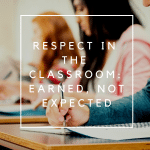[fusion_builder_container hundred_percent=”yes” overflow=”visible”][fusion_builder_row][fusion_builder_column type=”1_1″ background_position=”left top” background_color=”” border_size=”” border_color=”” border_style=”solid” spacing=”yes” background_image=”” background_repeat=”no-repeat” padding=”” margin_top=”0px” margin_bottom=”0px” class=”” id=”” animation_type=”” animation_speed=”0.3″ animation_direction=”left” hide_on_mobile=”no” center_content=”no” min_height=”none”]
My sixth year of teaching is behind me now, and like every year, I’m thinking about what to celebrate and where I need to grow next year. Each day I come home from teaching, reflecting on what went well and what I could have done better. But looking back at a whole school year takes time and space for the big takeaways to come into focus.
No matter what I glean from this year though, I will always remember it as the year my third graders set out to change the world.
I’ve always considered myself a teacher with a “social justice” orientation. In my younger years this meant smaller efforts like celebrating Barack Obama’s historic election with my students who would live in a country governed for the first time by a man who looked like them. Last year I made the effort to embed ideas of racial justice into the curriculum. We started the year with a unit on the Civil Rights movement and when we studied the history of New York City, I tried to center the stories of enslaved Africans and Native Americans.
What was different this year however was a continuous conversation about current events. Fueled by online campaigns like #WeNeedDiverseBooks, #BlackLivesMatter and #Womenon20s, my students learned about the fight for justice as a urgent and present-day matter. More importantly, my students took part in these campaigns. And at the end of the year, when we looked back on what we had learned, these moments were mentioned as often as multiplication and the writing process.
Many people question whether third graders are old enough to understand and tackle issues like media representation, police violence and gender equity. I understand this urge to shield our young people from the painful realities of the world. Each day when I read the newspaper I wish my students lived in a much different world. But unfortunately, whether or not I choose to talk about racism, sexism and other forms of oppression, they infect the lives of my students.
What I learned from talking about these topics this year is that my students could bring an enormous amount of prior knowledge to the conversation. In creating a space to discuss them, many students also discovered the language to name their experiences. My students would notice the lack of characters of color in their books, TV and movies, even if I hadn’t named it. My students knew Eric Garner‘s name, and when we discussed his death during morning meeting, they knew that he cried out “I can’t breathe” 11 times before he died. The girls in my class know what it feels like to be excluded from certain games and toys because of their gender. The moments when my students shared their knowledge about these issues were sad in a way, but they were also awe-inspiring, because they showed me that children as young as eight are not unaware to injustice in the world around them and they are eager to fight it.
What became powerful about these conversations was that so-called “hashtag activism” gave my students and I a platform to take action. We did not end with discussing these problems by sighing and moving onto math. Throughout the year we talked about ways to speak up and do something.
In the fall, my students created posters advertising their favorite books featuring characters of color. Later, I launched a blog where we began collecting book reviews of “diverse books” called We Read Diverse Books.
In December, after the non-indictments in Ferguson and Staten Island came back to back, my students created protest posters. Inspired by past and present civil rights activists, my young students wrote powerful signs proclaiming “I am a man” and “No justice, no peace”. At our school’s Sing Along that Friday, we stood up and chanted in our loudest voices, “Black lives matter!” We drew some stunned silence but also applause.
In March in honor of Women’s History Month, my students studied gender inequality around the world using articles from Time for Kids and Newsela. Then after we read biographies of Sojourner Truth, Harriet Tubman and Rachel Carson each student wrote an essay of support for one of these women to be on the twenty-dollar bill. We shared the essays with the school and collected votes for the Womenon20s campaign. At the same time we held a bake sale which raised $250 for a non-profit called Girls for Gender Equity.
This month when the treasury department announced that a woman would be on the ten-dollar bill, my students celebrated it as a personal victory.
With six days of school left, I addressed the Charleston terrorist shooting with my students. My heart was heavy. For my students it was an overwhelming and scary event. But once again we resolved to do something. And so on our last day of school we created a mural and a letter of support which I will mail to Mother Emanuel. Every single day of school this year felt like an opportunity to take action.
This is what I will always remember about these third graders. They talked about injustice in the world and not only could they handle that conversation, but they took action to change it. In doing so they transformed my idea of what was possible for students and for me as a teacher. That definitely feels like something to celebrate.[/fusion_builder_column][/fusion_builder_row][/fusion_builder_container]



